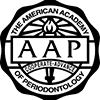A recent systematic review study published in Science Direct identified the prevalence of Awake Bruxism in the general population. Although bruxism has been studied for over 50 years, it was not until 2013 and 2018 when two international consensus papers classified bruxism into Sleep Bruxism and Awake Bruxism. Sleep Bruxism was defined as “masticatory muscle activity during sleep, rhythmic or not”. Awake Bruxism was defined as “an activity of the masticatory muscles, with sustained and/or repetitive contact of teeth and/or with static or rigid positioning of the mandible during the day”.
This study identified 81 studies for meta-analysis review. The results revealed that the prevalence rate of Awake Bruxism ranged from 16.6% (population based samples) to 32.08% (convenience or geographic samples). The range was explained due to the types of samples included in the different studies. The prevalence of Awake Bruxism was 14% – 32% for women and 19% -30% for men (population based and convenience studies, respectively). The authors of the study concluded that based on these data, one-sixth to one-third of the general population may have Awake Bruxism. Although Sleep Bruxism has been widely studied, there remains a large gap in the literature regarding Awake Bruxism and more studies are needed.






